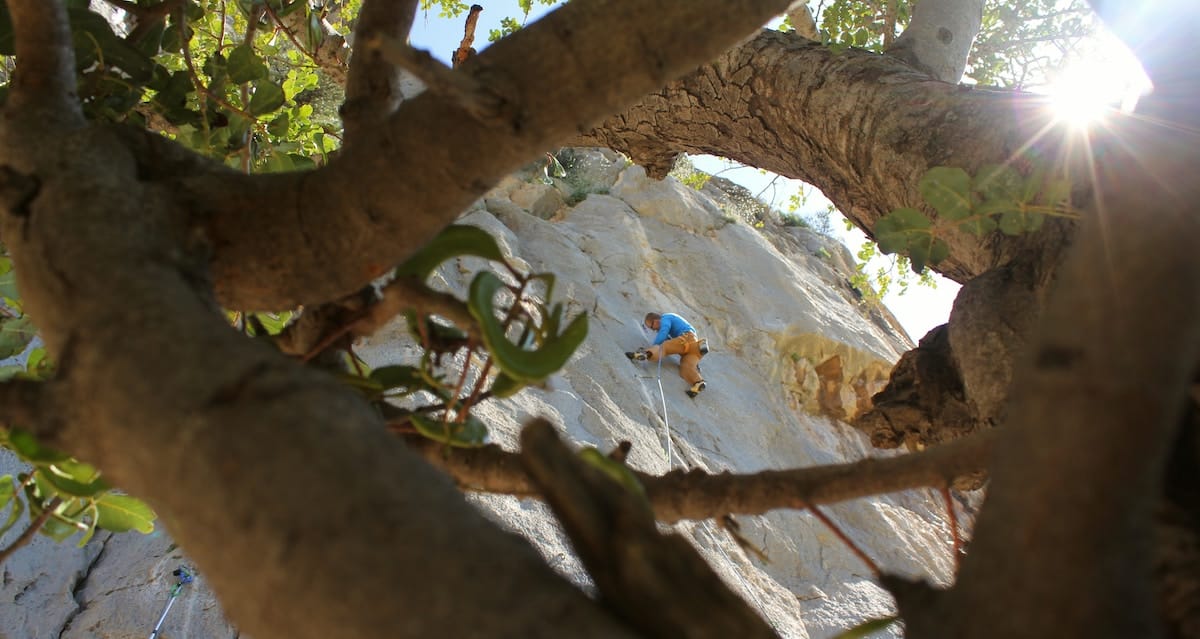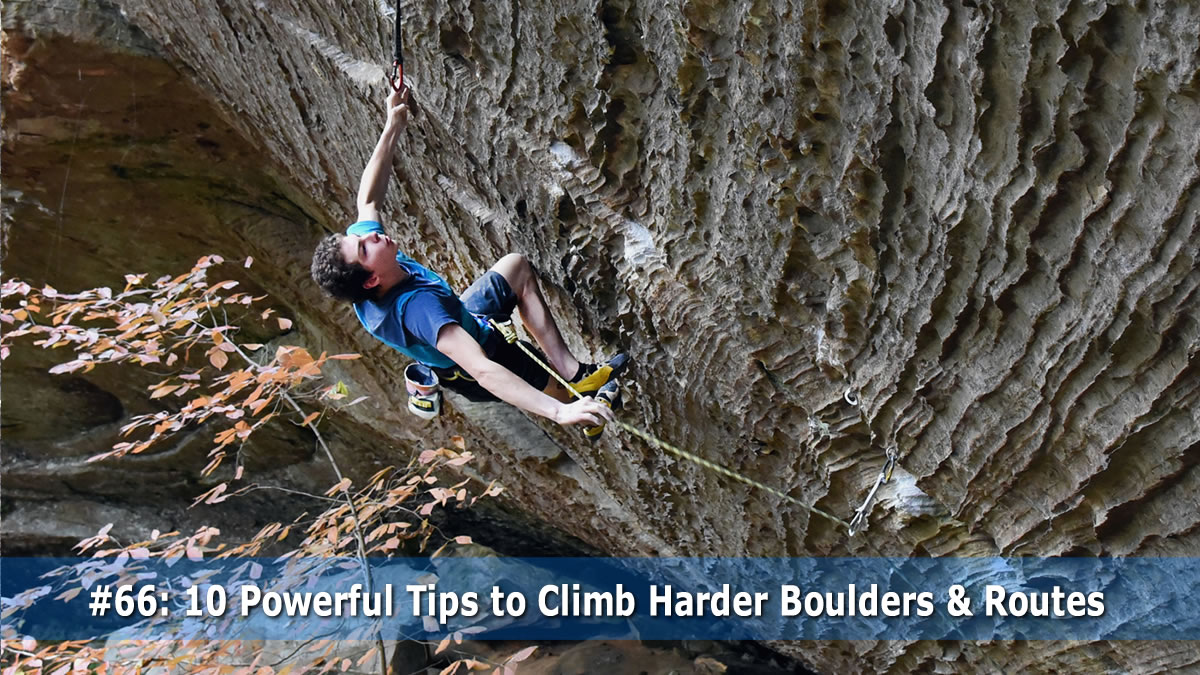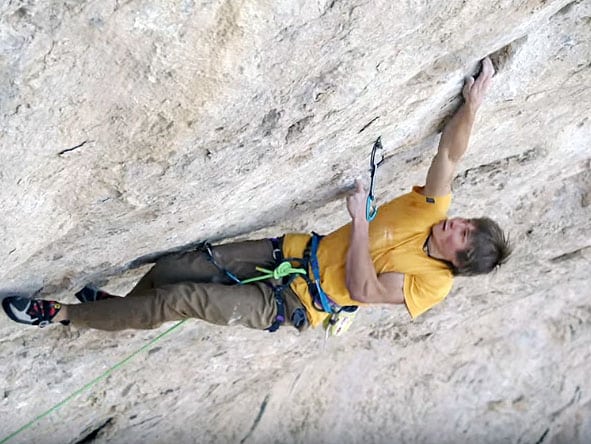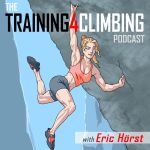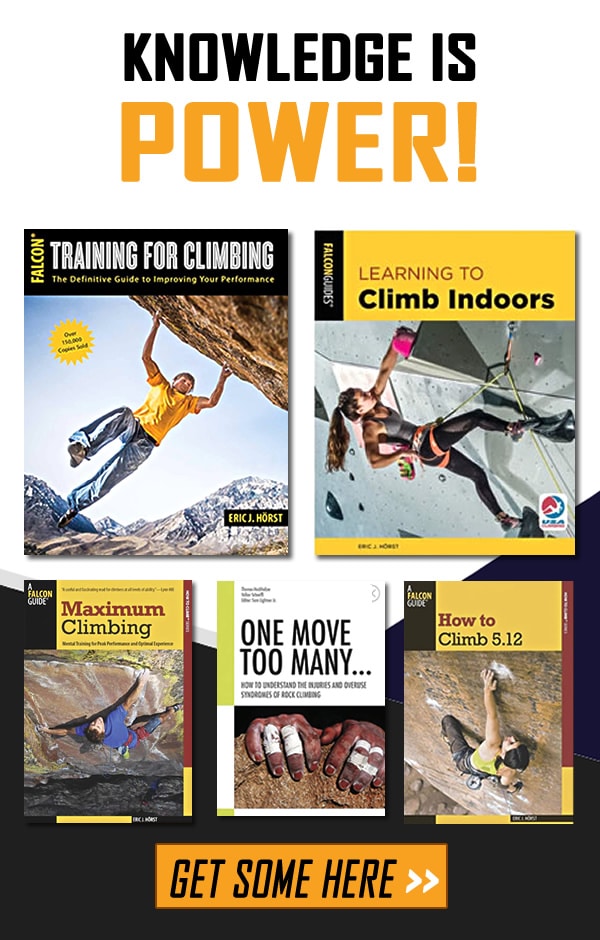Some kinds of fear are normal and necessary for the sake of safety in climbing. But the fear of failure is different—this kind of fear will only hold you back from your potential. Learn three powerful strategies to nix the fear of failure.
(This article was originally published in August of 2019, but the fear of failure hasn’t gone anywhere since then!)
Fear of failure wields tremendous power over climbers who possess not just want, but a need for success. Ironically, the fear of failure tends to produce the very failure you fear because it leads to a tight, timid approach of trying not to blow it. A good example of this in mainstream sports is how often a football team gives up the winning score when, late in the game, they shift into a so-called “prevent defense”.
In climbing, a try-not-to-fail “prevent defense” results in tentative movement and trepidation when making tenuous or dynamic moves. The fear of failure also leads to second-guessing sequences, doubting your ability, and focusing on the possibility of failure. This mental tension manifests itself as shallow breathing, overgripping of holds, jitters, and tense, inefficient movement. Before long, the very thing you are trying to avoid finds you.
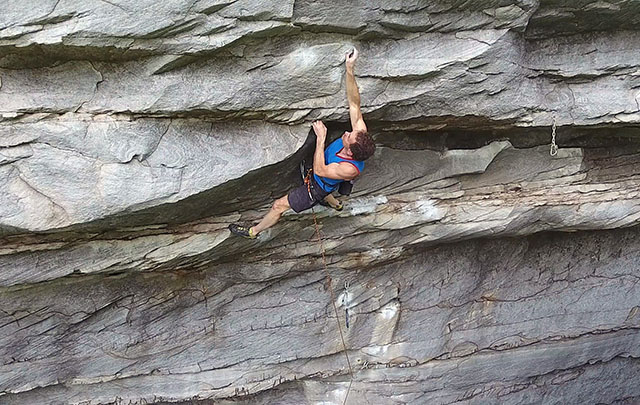
The author letting go of fear and skipping the crux quickdraw on “Pod” (5.13b), Summersville Lake, WV.
Since this kind of fear is completely self-imposed, however, it can be eliminated. Following are three strategies for nipping this fear in the bud.
1. Acknowledge Your Preparedness and Experience
Novice climbers, enamored of the process of learning to climb, tend to possess little fear of failure. More experienced climbers, on the other hand, often assume a more outcome-oriented mindset. This allows the fear of failure to strike at their soul. Fortunately, by consciously reviewing your preparedness, training, and experience, you can extinguish this fear for the most part.
Apply this coping strategy when you are scoping and roping up for a climb. Begin by taking a mental inventory of your recent training as well as your many climbing successes. Next, relive in your mind’s eye a few similar routes that you have prevailed on in the past. Finally, turn to pre-climb rituals that you’ve used leading up to previous ascents.
At the same time, try to release any thoughts of previous failures (on this or other routes) and wash from your consciousness the what-if adversities and worst-case scenarios that you imagined as part of your risk-management preparations. If necessary, counter these worrisome images with a few crisp, confident thoughts of what’s realistic based on past experiences and your investment in training. Then, as you step up to engage the rock, narrow your focus onto the holds in front of you and channel process-oriented thoughts.
2. Focus on the Process
Fear of failure is born from an outcome-oriented mindset that constantly ponders the odds and consequences of success versus failure. You can challenge this fear by focusing single-mindedly on the process of climbing rather than the outcome.
Concentrate on the things immediately relevant to your performance, such as precise foot placements, relaxing your grip, and moving quickly onto the next rest position. You can reach such a laser focus by tuning into your visual awareness. Look at the rock in front of you, making note of the slight variations and imperfections that make each hold unique. Strive for optimal placement of every hand and foot. This way, there will be little room left in your consciousness to dwell on success or failure.
Whenever your thoughts begin to shift away from process orientation, respond by redirecting your thoughts to your breathing. Pause for a deep breath or two. Feel the air rushing in and out of your chest, and notice your focus returning to the present moment. Combine this with a quick study of the hand- and footholds in front of you. This will get you back into the optimal process-oriented mindset.
3. Accept All Possible Outcomes
Adopt the attitude that it’s okay to fail. By willingly accepting this fate, if it were to happen, you become empowered to climb unhindered and with full commitment. Embracing the potential of a negative outcome doesn’t mean you aren’t going to try your best or that you want to fail. Instead, this position simply places you in another frame of mind from which you can give it your all without reservation.
Of course, gracefully accepting failure is easier said than done. You can only reach this mindset by consciously detaching your self-image from your performance. This can be difficult in the setting of a busy crag, since strangers tend to make first judgments on others based on what they see on the outside.
In that case, it’s important to remember that your true friends will like you regardless of your performance and that the opinions of strangers are not relevant. Whether or not you can completely embrace this mindset is a measure of maturity and self-confidence. Free yourself from the chains of needing to perform for others. Ultimately, it’s in climbing for yourself–win, lose, or hanging from a quickdraw–that you will feel most happy and climb your very best!
For more, read Maximum Climbing: Mental Training for Peak Performance.
Related Articles:
- Managing Common Climbing Fears, Part One
- Managing Common Climbing Fears, Part Two
- Coaching Video: Managing the Fear of Falling
- Projecting 101: 6 Tips for Sending Your Project
- How to Train Optimally in Pursuit of Climbing Mastery
Copyright © 2000–2023 Eric J. Hörst | All Rights Reserved.

